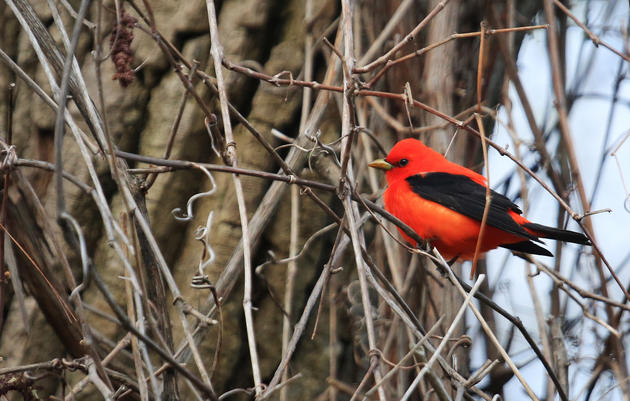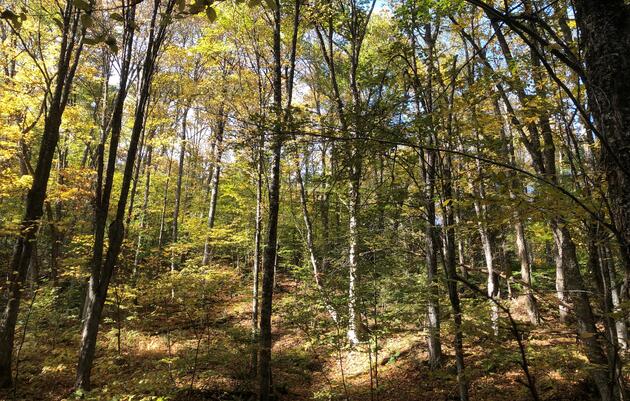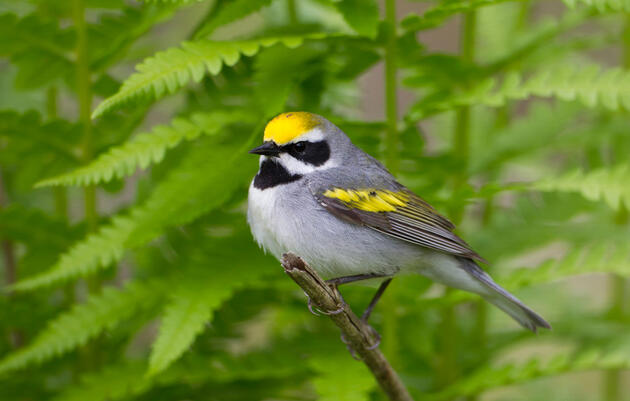“These green hills and silver waters are my home,” begins the Vermont state song. Vermont’s hills have remained green thanks to generations of people who have protected and nurtured our forests. These forests, in turn, have protected and nurtured Vermont’s communities of people and wildlife, including birds. According to scientists at the Vermont Center for Ecostudies, these green hills provide “some of the highest-quality breeding habitat for forest songbirds on the North American continent.” Additionally, our forests host a wide array of wildlife, provide clean air and “silver waters,” mitigate the impacts of extreme weather like floods and droughts, and store carbon. The forests in these green hills further support tourism and outdoor recreation and provide wood we use to build, heat, and furnish our homes. For decades, Vermonters have agreed that we must protect our forests, all while vigorously debating how best to do so. Those debates are increasing in intensity as our forests face a constellation of threats, including permanent conversion to development, disease, and climate change. Audubon Vermont’s conservation team has developed this three-part series to give voice to the needs of birds as we develop strategies and solutions to address these threats.
The Diverse Benefits of Vermont’s Forests
“The best time to plant a tree was twenty years ago. The second-best time is now.”
Though relevant to more than just trees, this proverb of uncertain origin has become a common refrain within the conservation community. To avoid the worst outcomes of the climate and biodiversity crises, the saying implies, we are decades late to the fight. But not too late. With prompt action, collaboration across boundaries, and a societal commitment to change, hope for a sustainable, biodiverse, and equitable planet persists.
What our delayed response does mean, however, is that our solutions can no longer be simple. We have imposed too many threats on too many of our nonnegotiable values for a silver-bullet policy or one-size-fits-all approach to drive the necessary change. Whether to advance environmental justice, slow climate change, restore wildlife communities, meet rising demand for food and housing, or all the above, solutions must be as multifaceted as the problems they aim to solve. When it comes to forest management, the need to embrace complexity is no different.
In “Shades of Green,” a three-part series by Audubon Vermont, we will outline our vision for forest management in Vermont. First, we must establish what is at stake under any management strategy. What do we value in Vermont forests? Why are these values under threat? In part one, we will shine a light on the diverse benefits of our state’s public and private forests—for people, birds, other wildlife, and the future of all three in a rapidly changing world.
While the question of what to do with Vermont’s forests often seems to elicit as many answers as the state’s 3.4 billion trees, why we need them stirs little debate. Vermont’s 4.5 million acres of forestland cover 76 percent of the state, the fourth-largest proportion in the country (USDA Forest Service, Vermont Forests 2017). The beautiful landscape and recreational opportunities that result foster a statewide ethic of pride and stewardship over our forests. Hundreds of thousands of Vermonters and tourists take to the woods each year to hike, ski, snowmobile, mountain bike, birdwatch, view fall foliage, fish, hunt, and more, reaping mental and physical health benefits along the way. The forest industry provides wood for building and heating Vermont homes and sustains rural communities across the state. According to the Vermont Department of Forest, Parks and Recreation’s (FPR) 2017 Forest Action Plan, Vermont’s forests contribute more than $3.4 billion and 20,000 jobs to the state each year through forest products, recreation, and tourism.
Vermont woodlands also support the immense variety of bird life that infuses our state with color and song. The Atlantic Northern Forest of Vermont, Maine, New Hampshire, and New York is home to the greatest diversity of breeding bird species in the continental United States. According to the Vermont Center for Ecostudies, more than 80 bird species breed in Vermont’s forest ecosystems alone. These include such iconic species as the Black-throated Blue Warbler, Canada Warbler, Wood Thrush, and Bicknell’s Thrush, whose global population breeds almost exclusively within the North Atlantic region.
Finally, as climate change continues to imperil the natural resources, public health, and biodiversity of our state, country, and world, Vermont’s forests play a vital role, simultaneously slowing the escalation of climate impacts and preparing us for what’s to come. According to the Department of Forest Parks and Recreation’s Vermont Forest Carbon Inventory, Vermont forests store over 1.7 billion metric tons of carbon dioxide equivalent, the same amount emitted by 200 years of human activity at current state levels. Our forests also provide clean air and water, erosion control, flood protection, and varied wildlife habitat, all critical to the state's resilience and adaptability to climate change.
Clearly, no single lens can fully account for the benefits we enjoy from living, working, and playing in Vermont’s forests. Importantly, while critical to our quality of life, health and safety, none of these benefits are guaranteed. For all that we gain from the services that our forests provide and the biodiversity they support, we have as much to lose with their degradation or loss from the landscape. In part two of our series, we will explore these threats to Vermont’s forests, setting the stage for our proposal of an integrated approach to forest management.
We are grateful to policy intern Thomas Patti for his work on this series and acknowledge his significant contributions.










